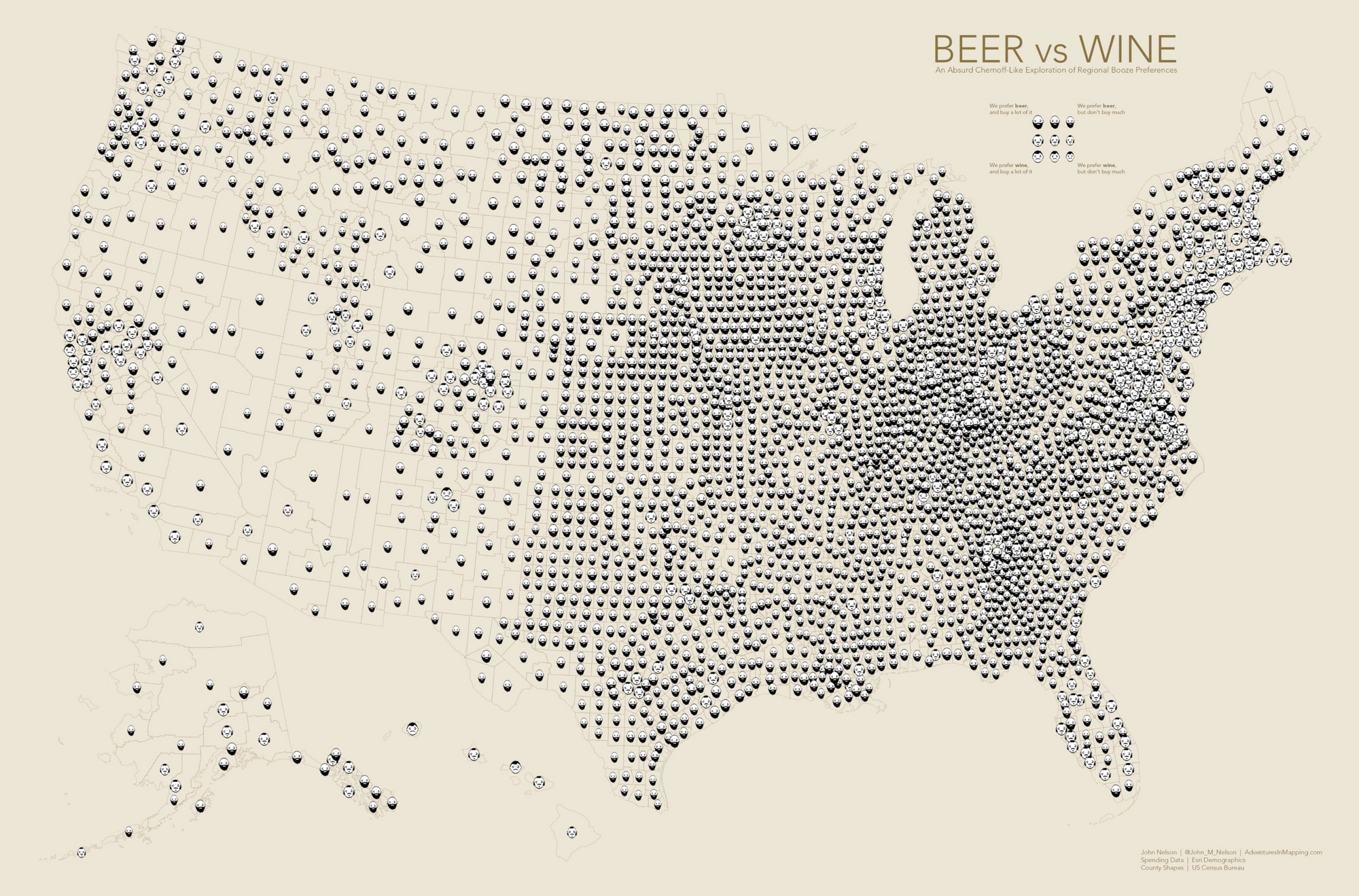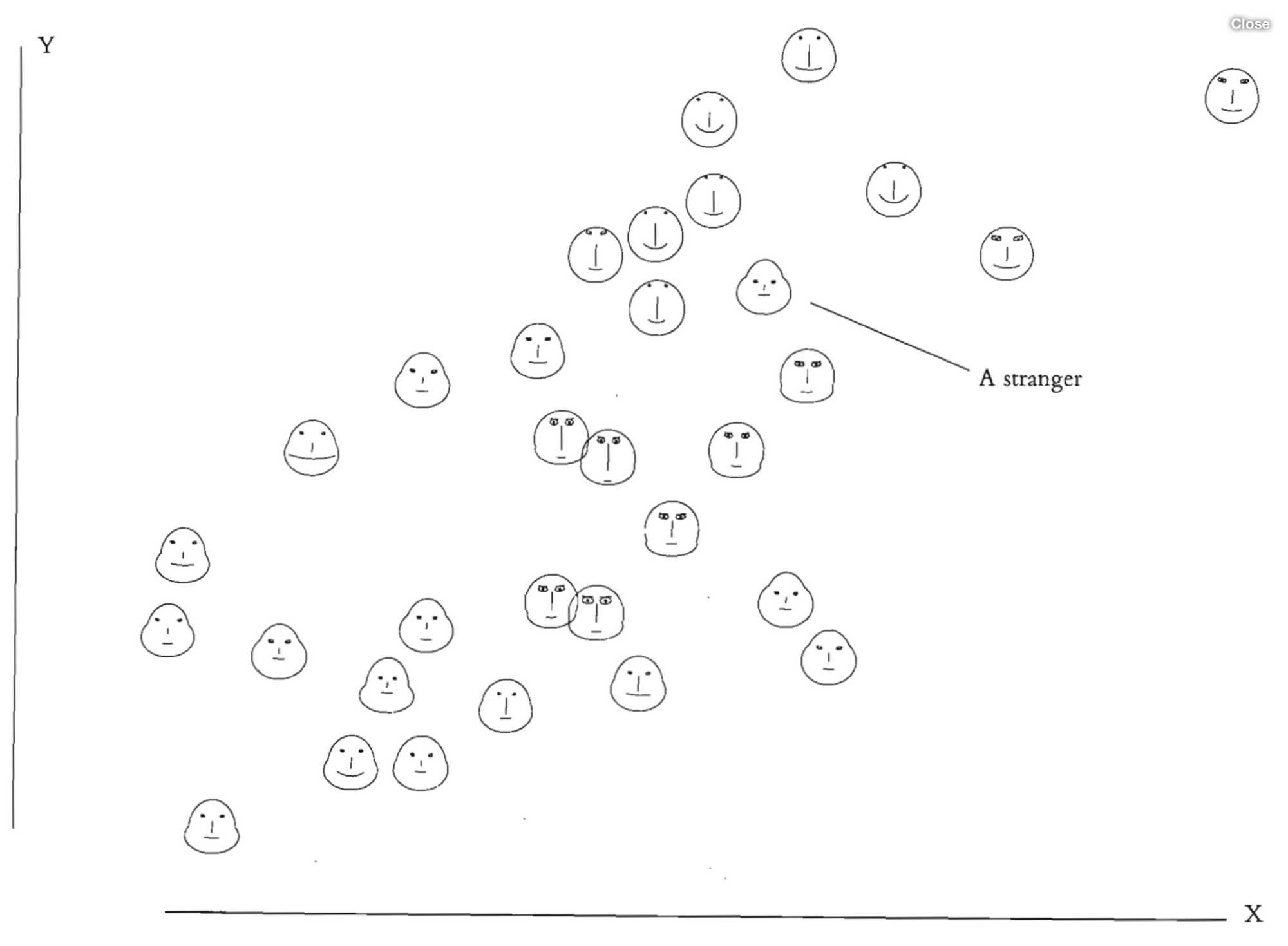About
The chernoff faces method (invented by Hermann Chernoff in 1973) can be used to visualize multi-dimensional values. Thus instead of a visualizing a single value and its expressions, multiple different values can be displayed and/or researched.
As the name implies, the method uses the human face and its different elements, such as mouth, nose, eyes, eyebrows, and maps different values to it. In order to do so, the values first have to be normalized.
The conceptional idea behind it takes advantage of the human capability in »reading« faces. Changes of or differences in facial expressions can easily be detected. Therefore this visualizing method is useful in order to detect extreme values respectively similarity of values of one dataset. At the same time the prior mentioned advantage of the method is its disadvantage: People tend to interpret and associate emotions and meanings to faces automatically. A sad mouth for example is automatiically interpreted as something »bad«, even if the attached data is something totally different.
Examples
Bad Examples

Good Examples


